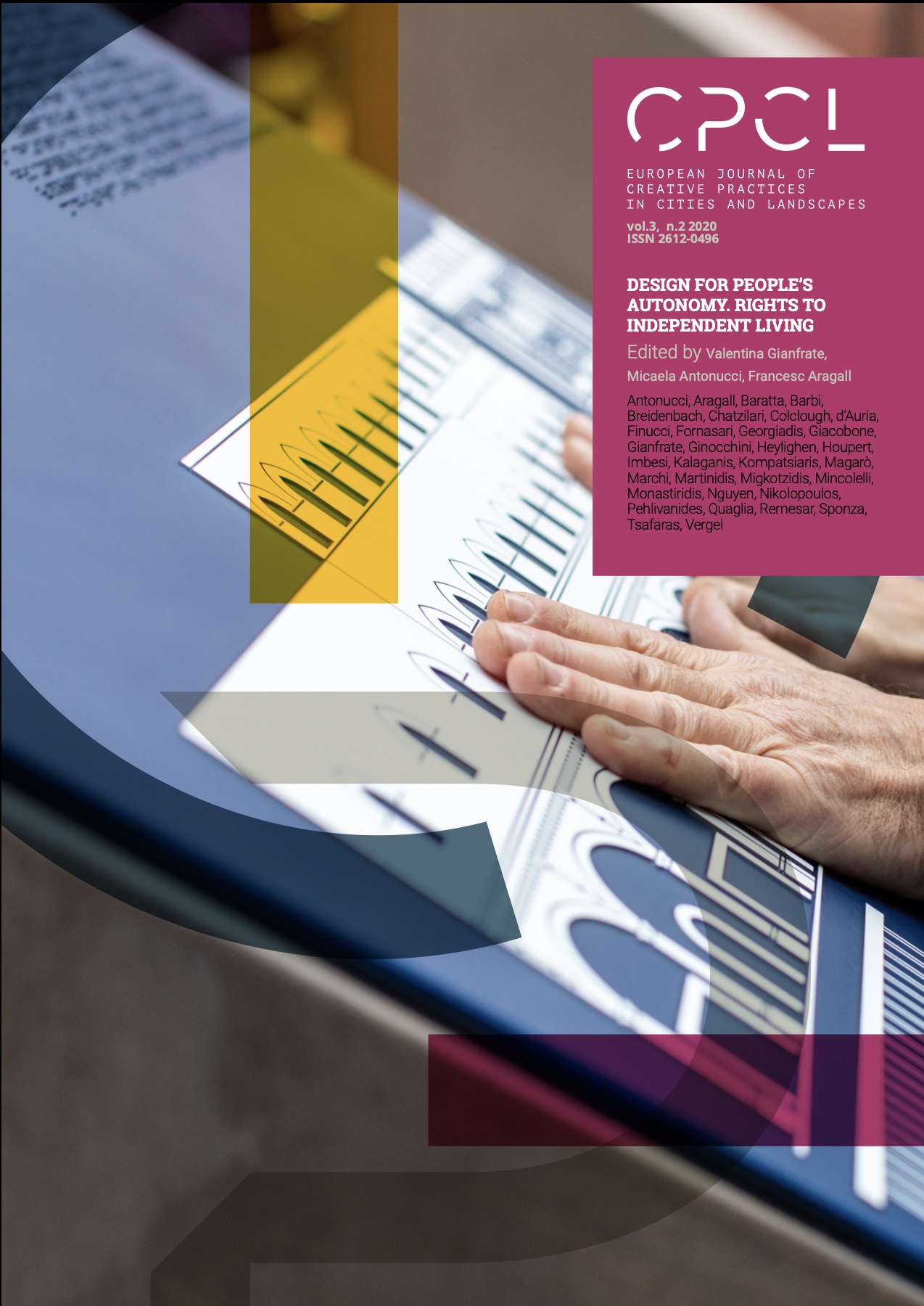Design for People Autonomy
DOI:
https://doi.org/10.6092/issn.2612-0496/12589Keywords:
Design, accessibility, autonomy, Human Centered design, human rights, inclusionAbstract
In the last years the debate related to people autonomy has been investigated in different fields of research and experimentation, starting from the relationship between personal autonomy and well-being, the ability to make decisions freely, the affirmation of one's right of choice, (the right to political participation, access to justice or the right to have a family) for the self-determination development (i.e. legal capacity), but at the same time “autonomy” can be interpreted as a complex result of human relationships, strengthening interaction and opportunity. This is valid for everyone, regardless of their health condition or functional limitations; in fact, no human being can be considered completely “autonomous” since everyone acts in a condition of interdependence with others to varying degrees. This last aspect is particularly significant for people with disabilities, because it affects their active involvement in the life of the community in which they live, and their ability to lead an independent life. The concept of independent living was introduced in the Article 19 of the Convention on the Rights of Persons with Disabilities (CRPD) and it is therefore closely connected to the citizen’s rights of disabled persons. The World Bank (WB) and the World Health Organization (WHO) estimate that a billion disabled people in the world face some barriers in the inclusion in many vital sectors, such as mobility, job, education, or simply in being socially or politically involved during their everyday life. However, the right to actively participate in the public life and reduce disparities are core elements of a stable democracy. Accessibility is intended as empowerment, meaning the individual and collective awareness of the right to access goods or services within one’s own community.
References
Belli, Raffaello. Vivere eguali. Disabili e compartecipazione al costo delle prestazioni. FrancoAngeli, 2014.
Christofi, Marilys. “Trade Union Education Management Disability Movement: Accessibility and Disability”, Athens, 2013. Available at: Http://Www. Esamea. Gr/Publications/Books-Studies/496-Ekpaideytiko-Egxeiridio-No-4-Prosbasimotita-Kai-Anapiria-Tis-Marilys-Xristofi.
ENIL (European Network on Independent Living). Myth buster. Independent living. December 2014 Available on: <http://www.enil.eu/wp-content/uploads/2014/12/Myths-Buster-final-spread-A3-WEB.pdf>
ENIL (European Network on Independent Living), CIL (Centre for Independent Living) Sofia & Rusihak. Independent Living Manual, December 2015. Available on: <http://www.enil.eu/wp-content/uploads/2012/06/Independent-Living-Manual- FINAL.pdf>
Lauria, Antonio. I piani per l’accessibilità. Una sfida per promuovere l’autonomia dei cittadini e valorizzare i luoghi dell’abitare. Con CD-ROM. Roma: Gangemi, 2012.
Northway, Ruth. “Ethical Issues.” In Learning Disabilities-E-Book: Towards Inclusion, edited by Helen Atherton and Debbie Crickmore, 75–88. Churchill Livingstone: Elsevier Health Sciences, 2011.
Ratzka, Adolf. “Independent Living for People with Disabilities: From Patient to Citizen and Customer.” GLADNET Collection, January 1, 2007.
United Nations and Department of Economic and Social Affairs. Disability and Development Report: Realizing the Sustainable Development Goals by, for and with Persons with Disabilities: 2018, 2019.
World Health Organization, World Report on Disability. Geneva: World Health Organization, 2011.
Zola, Irving Kenneth. “Toward the Necessary Universalizing of a Disability Policy.” The Milbank Quarterly 83, no. 4 (2005). https://doi.org/10.1111/j.14680009.2005.00436.x
Downloads
Published
How to Cite
Issue
Section
License
Copyright (c) 2020 Valentina Gianfrate, Francesc Aragall, Micaela Antonucci

This work is licensed under a Creative Commons Attribution 4.0 International License.




